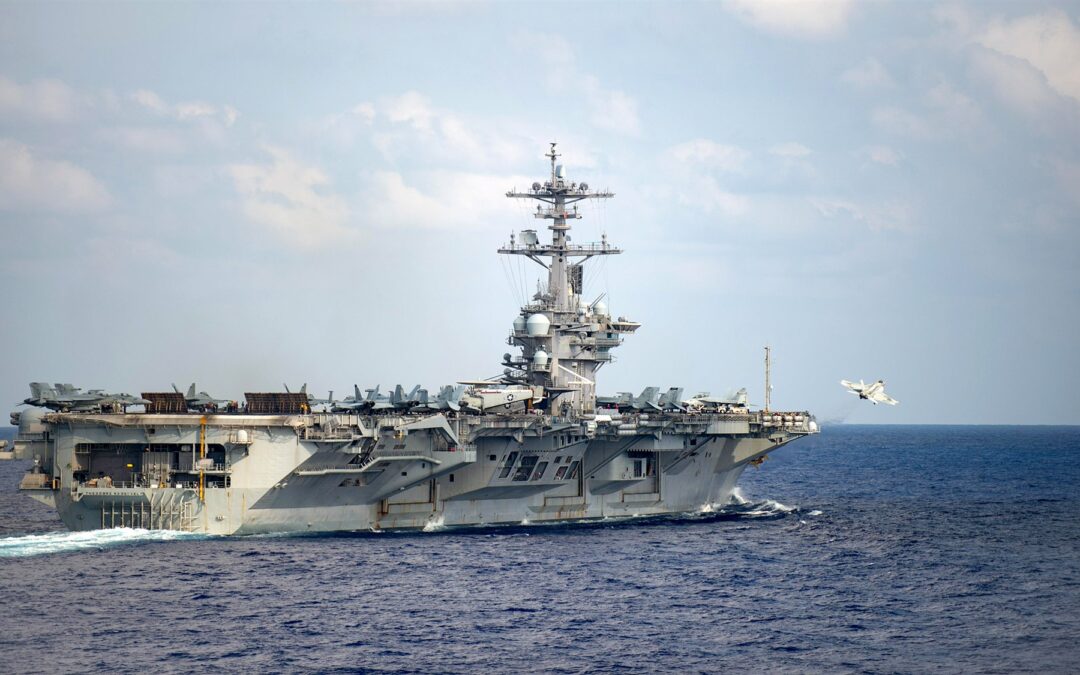Eight more sailors aboard the USS Theodore Roosevelt have tested positive again for the coronavirus, raising to 13 the number who appear to have become infected a second time while serving aboard the sidelined aircraft carrier.
All the sailors had previously tested positive for the virus and had gone through at least two weeks of isolation.
Before they were allowed to go back to the ship, all had to test negative twice in a row, with the tests separated by at least a day or two.
On Saturday, a Navy official confirmed eight additional sailors had tested positive again.
A day earlier the Navy had said in a statement that five had tested positive a second time.
That some crew were testing positive again has puzzled officials and raised questions about reintegrating troops into the military if a second infection were possible.
Also questioned was the accuracy of testing itself. In some cases infection can be at such a low level that it is not detected by the test, which could mean there were no relapses. Also, people could be cleared because their virus levels were too low for detection.
News of the second potential outbreak comes just two months after about 1,100 crew members on the ship tested positive for the virus. One crew member has died.
More than 4,000 crew members went ashore last month after the ship was diverted to Guam.
While more than 2,000 are back on board, at least 1,000 are still testing positive for the virus and remain on land.
And the close to 700 crew members who had been protecting and running the Roosevelt and systems aboard have now moved into hotels and other facilities on the island for their quarantine.
When it’s time to return to the ship, boarding takes place in slow, meticulous waves. Wearing gloves and masks, the crew members climb onto sterile buses only after they’ve had two negative tests for the virus.
They are screened and checked when they get on the bus and again before they board the ship. And even a simple sniffle can get them turned back.
Those who had stayed on the ship did deep cleaning four times a day.
The first outbreak led to the firing of Capt Brett Crozier. He was relieved of his duties on April 2 after a letter he wrote to superiors urging them to respond more quickly to the coronavirus outbreak on board the aircraft carrier leaked to the press at the end of March.
Thomas Modly, who was the acting Navy secretary at the time, flew aboard the carrier and delivered a profanity-laced speech criticizing both the crew and Crozier. Within days, Modly resigned.
While questions still loom over whether Crozier will be reinstated as Roosevelt’s captain, he has taken up a temporary staff job with Naval Air Forces in San Diego, spokesperson Cmdr Ron Flanders confirmed Tuesday.
According to Flanders, Crozier will serve as special assistant to the Naval Air Forces Chief of Staff, Capt Max McCoy.
Late last month, the Navy revealed that officials will conduct a wider investigation of circumstances surrounding the spread of the coronavirus aboard the Roosevelt, a move that delayed the decision on whether to reinstate Crozier.
The investigation was announced by James E. McPherson, the acting Navy secretary, who said in a brief written statement that an initial inquiry was insufficient.
‘I have unanswered questions that the preliminary inquiry has identified and that can only be answered by a deeper review,’ he said.
he outbreak was the most severe in the US military, which is seeking to balance a need to protect troops while also maintaining US defenses.
The broader probe is to examine communication and leadership actions in the Navy chain of command in the Pacific, to include events before the initial virus outbreak in late March, officials said.
The announcement of the investigation came days after Secretary of Defense Mark Esper declined to immediately endorse the Navy’s original investigation into the issue, which included a recommendation to reinstate Crozier.
